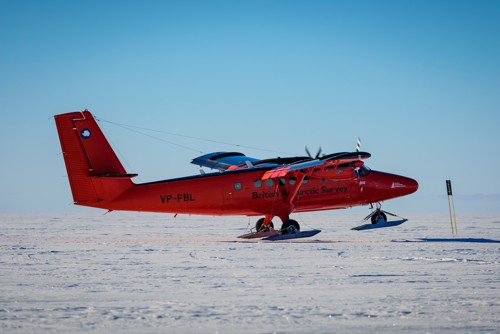Update from Antarctica: A day in the life of a Twin Otter pilot
- 24th Apr 2024
Located in Antarctica itself, at 67°34’S Rothera Research Station is the austral summer’s home for the British Antarctic Survey’s small fleet of 4 DHC-6-300 “Twin Otter” aircraft and their pilots, whose mission is to route out from the base to deploy, supply, and recover the science teams as they reach deeper into the continent to execute their individual projects. A mixed cadre of male and female pilots, they operate hand in glove (literally as well as metaphorically!) with the scientists in order to best service the teams’ needs, including when required to, living in rugged polar tents whose robust design has not changed much since the early days of Antarctic exploration.

In order to meet those needs across an ever-evolving spread of locations, and to support multiple international collaborative missions, the Survey has established a network of remote fuel “depots” (a grand name for a small collection of fuel drums left on the snow surface) across an area of Antarctica the size of Europe. Not only is the maintenance of this network a multi-faceted jigsaw in itself, but those depots based on ice flows move each year with the ice sheets below them, and all of them become buried in fresh snowfall over the Antarctic winters, leaving only an erected marker post to re-locate them. No shirt-sleeve operation this, besides camping on the snow and ice, digging out fuel drums is all in a day’s work for an Antarctic pilot.

All the aircraft are equipped with retractable skis, enabling wheeled operations from Rothera’s gravel runway, but ski operations onto the remote snowfields. Reconnoitring new landing fields or those not recently visited is a trained Antarctic skill in itself. Pilots are routinely required to “trail skis” (a manoeuvre somewhat similar to water-skiing) along the selected landing area while still in wing-borne flight, before subsequently landing back in their tracks. Meanwhile, marked out on a glacier at 4 700 feet altitude some 500 miles south of Rothera (at 74°51’S, making it the UK’s most southerly runway), is the ”blue ice” runway of Sky Blu (ICAO designator EGAT), a spartan forward operating base for reaching deeper into the Antarctic continent. Bookended to the north by the towering mountain it flows off, operating in and out of Sky Blu is a unique piloting experience all of itself.

As aviation operations out of the mainstream go, this has to be right up among the best of all worlds: it’s challenging and hugely satisfying flying, while contributing directly to our understanding of our planet and of humankind’s influence on it.

Tim Below is an experimental test pilot, now flying with the British Antarctic Survey after a 36-year career in the Royal Air Force, and will be presenting on the Inspire Stage at RIAT 2024.
